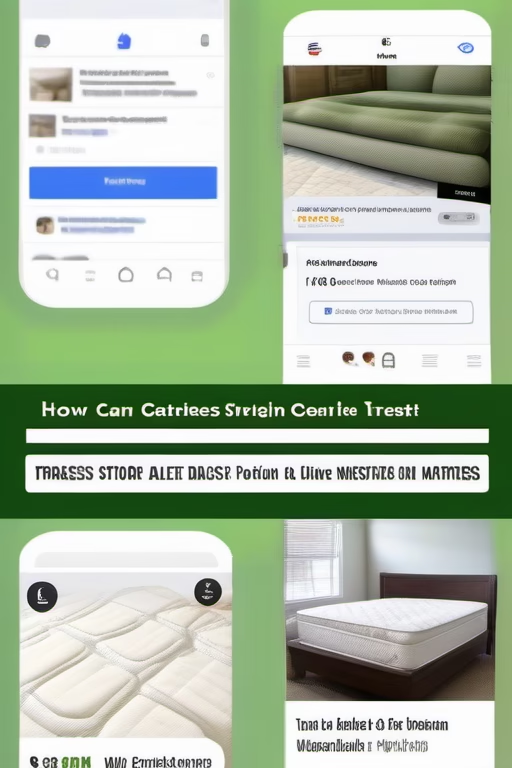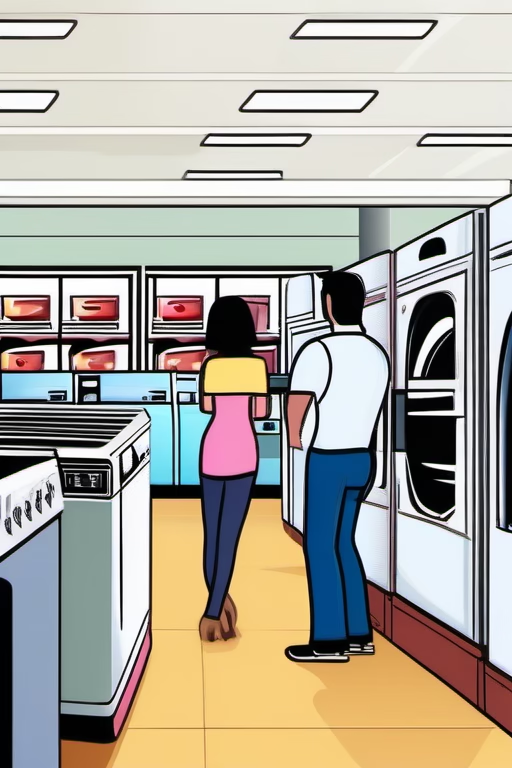How to Sell More Smart Thermostats: Educating Customers on Energy Savings
Your Complete Guide by Market Wiz
Table of Contents
- Introduction: The Smart Thermostat Opportunity
- 1. Understanding Buyer Mindsets
- 1.1 Tech Enthusiasts vs. Energy Savers
- 1.2 Homeowners with High Bills
- 1.3 Eco-Conscious Consumers
- 2. Key Benefits to Highlight
- 2.1 Energy Savings & ROI
- 2.2 Comfort & Convenience
- 2.3 Smart Home Integration
- 2.4 Reporting & Insights
- 3. Crafting Your Educational Sales Pitch
- 4. Digital Marketing Strategies
- 4.1 SEO for “Smart Thermostat Savings”
- 4.2 Content Marketing: Blogs & Videos
- 4.3 Paid Campaigns: Google & Social
- 4.4 Email & SMS Nurture Sequences
- 5. In-Person Demonstrations & Workshops
- 6. Overcoming Common Objections
- 7. Upselling & Cross-Selling Opportunities
- 8. Partnering with HVAC Technicians & Retailers
- 9. Measuring Success & Iteration
- Conclusion & Next Steps
- 25 FAQs
- 25 Extra Keywords
Introduction: The Smart Thermostat Opportunity
Smart thermostats aren’t just gadgets—they’re gateways to enormous energy savings, enhanced comfort, and deeper customer loyalty. By educating buyers on real-world ROI and seamless integration, you can transform a curious lead into a high-value sale. In this guide, Market Wiz walks you through the strategies top HVAC and home-tech providers use to convert interest into installation.
1. Understanding Buyer Mindsets
1.1 Tech Enthusiasts vs. Energy Savers
Some customers buy the latest tech for novelty—others seek to cut electric bills. Tailor your messaging to each: demos of remote-control features for enthusiasts; case studies of 15–20% savings for budget-conscious shoppers.
1.2 Homeowners with High Bills
Identify ZIP codes with above-average energy spend. Offer free home energy audits and personalized savings projections to break the ice and demonstrate value.
1.3 Eco-Conscious Consumers
Position the thermostat as an environmental investment—highlight reduced carbon footprint, compatibility with solar, and eco-mode scheduling.
2. Key Benefits to Highlight
2.1 Energy Savings & ROI
Show a simple payback chart: upfront cost vs. annual savings. Use real billing data when possible to personalize the estimate.
2.2 Comfort & Convenience
Emphasize features like geofencing, adaptive scheduling, and remote temperature control—perfect for families and frequent travelers.
2.3 Smart Home Integration
Demonstrate voice assistant compatibility (Alexa, Google), scenes linking to lights, and energy reports sent to smartphones.
2.4 Reporting & Insights
Highlight weekly energy summaries, peak usage alerts, and recommendations for further savings—build trust through transparency.
3. Crafting Your Educational Sales Pitch
Structure your presentation in three steps:
- Assess Current Spend: Review recent utility bills and ask about temperature comfort zones.
- Show Savings Simulation: Use an interactive calculator to project 1–3 year payback.
- Demonstrate the Device: Live walkthrough of app controls, learning modes, and schedule setup.
4. Digital Marketing Strategies
4.1 SEO for “Smart Thermostat Savings”
- Optimize page titles & headings with phrases like “Reduce Energy Bills with Smart Thermostats.”
- Create content hubs covering installation guides, product comparisons, and rebate programs.
4.2 Content Marketing: Blogs & Videos
Publish posts such as “5 Ways a Smart Thermostat Pays for Itself” and short demo videos on YouTube & Instagram.
4.3 Paid Campaigns: Google & Social
Run search ads targeting high-intent queries and retarget site visitors with carousel ads showcasing savings testimonials.
4.4 Email & SMS Nurture Sequences
- Drip series: introduction, benefit deep dive, customer success story, rebate reminder, and closing incentive.
- SMS alerts for limited-time rebate deadlines to drive urgency.
5. In-Person Demonstrations & Workshops
Host “Smart Home Saturday” events at local HVAC showrooms or community centers. Provide hands-on demos, live savings calculators, and exclusive event-only discounts to capture leads on the spot.
6. Overcoming Common Objections
- “Too expensive”: Emphasize rebates, financing, and 2–3 year payback charts.
- “Privacy concerns”: Explain data encryption, user control over data sharing, and offline operation modes.
- “Compatibility”: Offer free compatibility checks and highlight universal mounting kits and adapter modules.
7. Upselling & Cross-Selling Opportunities
- Bundle with HVAC maintenance contracts at a discounted package rate.
- Offer add-ons like remote sensors for multi-zone monitoring.
- Suggest complementary smart devices: door/window sensors, water leak detectors, and smart lighting.
8. Partnering with HVAC Technicians & Retailers
Train technicians on demo scripts and equip them with tablet-based ROI tools. Forge referral programs with home centers and builders—offer them co-branded discount cards to distribute.
9. Measuring Success & Iteration
- Track lead source ROI: organic search, paid ads, events, referrals.
- Monitor conversion rates: demo-to-sale and web-form-to-site-visit ratios.
- A/B test messaging—“Save 20% on Energy Bills” vs “Control Your Comfort Remotely”—and refine quarterly.
Conclusion & Next Steps
Smart thermostats offer a compelling combination of energy savings, comfort, and modern convenience. By educating customers with clear ROI examples, leveraging robust digital and live-demo strategies, and addressing objections head-on, you can turn curiosity into confident purchases. Start by auditing your key landing pages, scheduling a local workshop, and equipping your field team with interactive savings calculators—then watch your smart-thermostat sales climb.
25 Frequently Asked Questions
1. How much can a smart thermostat save on bills?
On average 10–15% on heating and 15% on cooling costs—actual savings depend on usage patterns and local rates.
2. Are there rebates available?
Many utilities and municipalities offer \$50–\$200 rebates; always check local rebate portals.
3. How long is payback?
Typically 2–3 years when factoring in rebates and financing.
4. Do smart thermostats work with all HVAC systems?
Most models support standard HVAC setups; for exotic systems, compatibility adapters are available.
5. What about data privacy?
Leading brands use AES-128 encryption and let users control data sharing settings.
6. Can renters install them?
Yes—many devices use no-drill mounts and require minimal rewiring; always get landlord approval.
7. Which brands are top-rated?
Nest, Ecobee, Honeywell Lyric, and Emerson Sensi consistently score high in consumer tests.
8. Is professional installation required?
DIY is possible for many, but professional install ensures compatibility and optimal configuration.
9. How to demonstrate ROI in-store?
Use interactive touchscreens with real-time energy calculators and sample bill comparisons.
10. Can I upsell sensors?
Yes—remote room sensors boost comfort and are a natural add-on during installation.
11. How to handle objections on cost?
Focus on net cost after rebates and long-term savings, not just upfront price.
12. Do they work offline?
Basic scheduling functions work without Wi-Fi; remote access requires connectivity.
13. What’s the warranty?
Most offer 2–3 year limited warranties; extended plans are available.
14. Are they compatible with solar?
Yes—many integrate solar production data to optimize usage during peak generation.
15. How to train technicians?
Provide quick-reference guides, demo units, and role-play sessions on ROI discussions.
16. Can I demo virtually?
Offer screen-share demos of mobile apps and virtual home walkthroughs via video call.
17. What’s the best ad platform?
Google Search Ads for high-intent searches and Facebook lookalikes for energy-saver audiences.
18. How often update content?
Quarterly—refresh statistics, case studies, and rebate info to stay current.
19. Should I bundle with maintenance?
Yes—combine with a 1-year service plan at a small discount to boost LTV.
20. How to collect leads at events?
Use tablets for sign-ups, offer event-only rebates, and follow up within 24 hours.
21. Can smart thermostats reduce HVAC wear?
Yes—by optimizing cycles and avoiding extreme setpoints, they can extend system life.
22. What metrics to track?
Lead-to-demo, demo-to-sale, average ticket, and post-install satisfaction ratings.
23. How to handle technical FAQs?
Create a searchable online knowledge base and equip sales staff with key talking points.
24. Are multi-zone installs more complex?
Slightly—requires additional sensors and zoning dampers; factor on-site load calculations.
25. First step to implement?
Audit your current sales materials, build an interactive ROI calculator, and train your team this week.
25 Extra Keywords
- smart thermostat energy savings
- install ecobee thermostat
- nest learning thermostat ROI
- best smart thermostat deals
- DIY thermostat install savings
- WiFi thermostat rebates
- smart home heating controls
- energy bill reduction tips
- HVAC upsell smart devices
- thermostat integration Alexa
- geofencing thermostat marketing
- remote HVAC control
- adaptive thermostat scheduling
- peak demand energy alerts
- connect smart thermostat
- thermostat savings calculator
- energy efficient HVAC upgrades
- voice controlled thermostat
- smart HVAC testimonials
- smart thermostat workshops
- HVAC demo events
- rebate deadline notices
- SMS energy tips
- email drip energy savings
- Market Wiz smart-home tips

















